Opinion & Analysis
Finding the right wedge shaft for your game
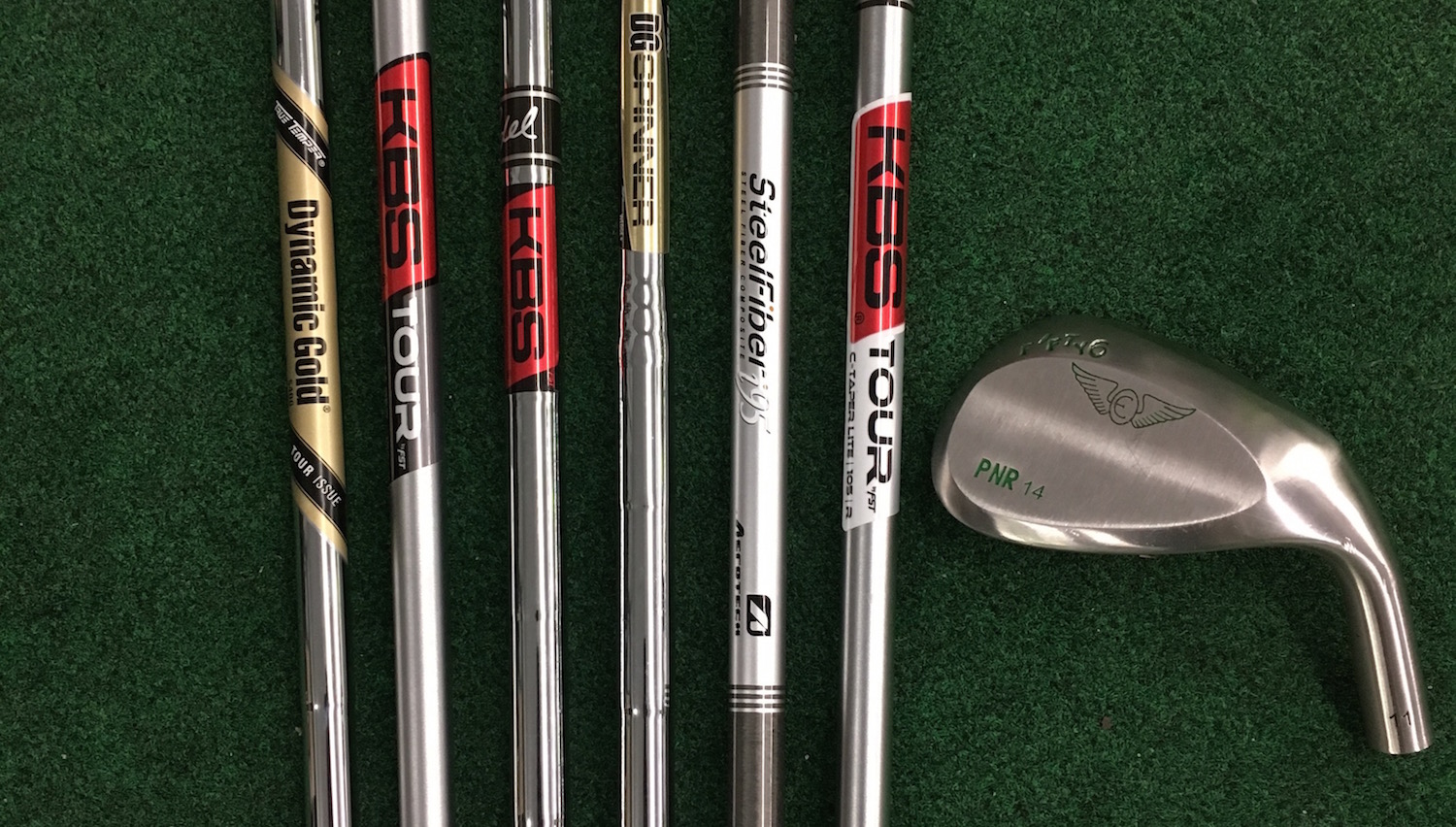
In the minds of many golfers, wedges are the most important clubs in the bag. As a fitter, I am always surprised how this belief conflicts with the amount of consideration golfers typically put into selecting their wedges. When asked why certain wedges are in their bag, most reply with something along the lines of, “Well, I’ve always just used this loft and grind,” “I’m not really sure” or “My buddy, who’s a scratch golfer, told me I need it.” For most, wedges are in an unfortunate race with the putter to win the unceremonious award of the clubs that help golfers the least.
Most people know there are wedges with multiple loft and bounce options available, even if they’re not quite sure what’s best for them. Very few, however, have ever thought about the shafts in their wedges. In this article, I’ll be showing you the importance of finding the proper shaft for the wedges in your bag by illustrating how different shafts can impact performance.
The goal of this test is not to make some generic recommendation that “you should be playing XXX shaft,” but rather to highlight the variance that can exist across different shafts. I encourage you to do your own testing with a qualified fitter, but if one is unavailable in your area, these themes might help find a good wedge shaft for you.
Testing Process
To conduct these tests, I selected three testers with low single-digit handicaps and relatively consistent swings. Any findings will only be amplified for higher-handicap golfers due to increased swing variability, and any shaft-to-shaft variations might have been hidden by this inconsistency.
We used an Edel Wedge fitting system because of the interchangeable hosel system and extensive shaft options. Each tester selected a 56-degree head with the bounce that fit them best. They then used the same wedge head on each of the six shafts we tested. The order the shafts was randomized for each golfer during the testing process.
The shafts represented some common wedge shafts and crossed multiple weights, flexes and EI profiles. Testers hit five shots at a target 100 yards away with each shaft, and all shots were measured with FlightScope.
The Data
Data: To start, I’m posting a table that shows summary results for each shaft per golfer (below). A couple of things to remember when reading this:
- All distances are in yards.
- All distances are carry distances.
- On lateral distances: negative numbers represent left of target, positive numbers right of target.
- Standard deviation shows the variance in the range with smaller numbers being better.
Full Testing Results
A lot to digest, right?
To help gauge shaft performance for each golfer, I created an additional table showing the ranges in carry distance and lateral dispersion. These numbers were then multiplied to calculate the total area covered by the five shots with each shaft. This is the single best summary stat I can think of to grade wedge performance.
Simplified Testing Results
Now we can start to see some things.
- Based on the average size of the dispersion area, Wes is the best wedge player. Sorry Mike and Nick, but I’m pretty sure you already knew this…
- Distance control is where variation really shows up, and this is where the best wedge players differentiate themselves. Of the 18 player/shaft combinations we tested, there were only two where the carry distance range was less than the lateral range.
- Each player did have a specific shaft that stood out, one with a dispersion area much smaller than the other options. There just wasn’t any consistency in shaft performance across the golfers.
Best and Worst Shafts for Each Tester
Launch Angle and Spin Rate Rankings
The same variation is found when looking at launch angle and spin rates, with the shafts that produced the highest and lowest launch and spin numbers varying for each golfer. These tables are simple stack rankings, based on performance.
- One interesting correlation was that for two of the three golfers, the same shaft provided the smallest dispersion area and lowest launch angle. While not a hard and fast rule, it’s something to keep in mind when trying out wedge shafts.
- The shafts that worked better for the testers weren’t necessarily the ones you would have guessed. The KBS C-Taper Lite 105R worked the best for Nick, who has an upright and aggressive swing. Wes has a flat, smooth swing and the relatively stiff and heavy True Temper DG Spinner Wedge+ shaft worked the best for him.
Two Big Takeaways
- Lighter and More Flexible is Probably Better. When selecting new or re-shafting your existing wedges, your best bet is to find a fitter with the proper experience and equipment to guide you through the options. If that’s not possible, a general trend shown here is that a shaft that’s lighter and a bit more flexible than what you’re using in your irons is a good bet.
- Enough about the Spin. Worrying about what wedge shaft creates the most spin should not be your top concern. Even though there was shaft-to-shaft variation in the spin produced, they all had enough to quickly stop the ball on the green. As good as these Edel wedges are, this is a consistent finding regardless of the brand we’re fitting. Finding the proper wedge head (loft, grind, bounce) and a shaft that helps your distance control should be your main focus when getting new wedges, not if one option gives you an extra hundred or two RPMs.
In our next article, we’ll talk more about selecting bounce and give you some tips on how to fit yourself if you can’t find a fitter with a proper wedge fitting system.
- LIKE427
- LEGIT58
- WOW25
- LOL5
- IDHT6
- FLOP12
- OB3
- SHANK35
19th Hole
Vincenzi’s 2024 Zurich Classic of New Orleans betting preview

The PGA TOUR heads to New Orleans to play the 2023 Zurich Classic of New Orleans. In a welcome change from the usual stroke play, the Zurich Classic is a team event. On Thursday and Saturday, the teams play best ball, and on Friday and Sunday the teams play alternate shot.
TPC Louisiana is a par 72 that measures 7,425 yards. The course features some short par 4s and plenty of water and bunkers, which makes for a lot of exciting risk/reward scenarios for competitors. Pete Dye designed the course in 2004 specifically for the Zurich Classic, although the event didn’t make its debut until 2007 because of Hurricane Katrina.
Coming off of the Masters and a signature event in consecutive weeks, the field this week is a step down, and understandably so. Many of the world’s top players will be using this time to rest after a busy stretch.
However, there are some interesting teams this season with some stars making surprise appearances in the team event. Some notable teams include Patrick Cantlay and Xander Schauffele, Rory McIlroy and Shane Lowry, Collin Morikawa and Kurt Kitayama, Will Zalatoris and Sahith Theegala as well as a few Canadian teams, Nick Taylor and Adam Hadwin and Taylor Pendrith and Corey Conners.
Past Winners at TPC Louisiana
- 2023: Riley/Hardy (-30)
- 2022: Cantlay/Schauffele (-29)
- 2021: Leishman/Smith (-20)
- 2019: Palmer/Rahm (-26)
- 2018: Horschel/Piercy (-22)
- 2017: Blixt/Smith (-27)
2024 Zurich Classic of New Orleans Picks
Tom Hoge/Maverick McNealy +2500 (DraftKings)
Tom Hoge is coming off of a solid T18 finish at the RBC Heritage and finished T13 at last year’s Zurich Classic alongside Harris English.
This season, Hoge is having one of his best years on Tour in terms of Strokes Gained: Approach. In his last 24 rounds, the only player to top him on the category is Scottie Scheffler. Hoge has been solid on Pete Dye designs, ranking 28th in the field over his past 36 rounds.
McNealy is also having a solid season. He’s finished T6 at the Waste Management Phoenix Open and T9 at the PLAYERS Championship. He recently started working with world renowned swing coach, Butch Harmon, and its seemingly paid dividends in 2024.
Keith Mitchell/Joel Dahmen +4000 (DraftKings)
Keith Mitchell is having a fantastic season, finishing in the top-20 of five of his past seven starts on Tour. Most recently, Mitchell finished T14 at the Valero Texas Open and gained a whopping 6.0 strokes off the tee. He finished 6th at last year’s Zurich Classic.
Joel Dahmen is having a resurgent year and has been dialed in with his irons. He also has a T11 finish at the PLAYERS Championship at TPC Sawgrass which is another Pete Dye track. With Mitchell’s length and Dahmen’s ability to put it close with his short irons, the Mitchell/Dahmen combination will be dangerous this week.
Taylor Moore/Matt NeSmith +6500 (DraftKings)
Taylor Moore has quickly developed into one of the more consistent players on Tour. He’s finished in the top-20 in three of his past four starts, including a very impressive showing at The Masters, finishing T20. He’s also finished T4 at this event in consecutive seasons alongside Matt NeSmith.
NeSmith isn’t having a great 2024, but has seemed to elevate his game in this format. He finished T26 at Pete Dye’s TPC Sawgrass, which gives the 30-year-old something to build off of. NeSmith is also a great putter on Bermudagrass, which could help elevate Moore’s ball striking prowess.
- LIKE6
- LEGIT1
- WOW1
- LOL0
- IDHT0
- FLOP2
- OB1
- SHANK1
19th Hole
Vincenzi’s 2024 LIV Adelaide betting preview: Cam Smith ready for big week down under

After having four of the top twelve players on the leaderboard at The Masters, LIV Golf is set for their fifth event of the season: LIV Adelaide.
For both LIV fans and golf fans in Australia, LIV Adelaide is one of the most anticipated events of the year. With 35,000 people expected to attend each day of the tournament, the Grange Golf Club will be crawling with fans who are passionate about the sport of golf. The 12th hole, better known as “the watering hole”, is sure to have the rowdiest of the fans cheering after a long day of drinking some Leishman Lager.
The Grange Golf Club is a par-72 that measures 6,946 yards. The course features minimal resistance, as golfers went extremely low last season. In 2023, Talor Gooch shot consecutive rounds of 62 on Thursday and Friday, giving himself a gigantic cushion heading into championship Sunday. Things got tight for a while, but in the end, the Oklahoma State product was able to hold off The Crushers’ Anirban Lahiri for a three-shot victory.
The Four Aces won the team competition with the Range Goats finishing second.
*All Images Courtesy of LIV Golf*
Past Winners at LIV Adelaide
- 2023: Talor Gooch (-19)
Stat Leaders Through LIV Miami
Green in Regulation
- Richard Bland
- Jon Rahm
- Paul Casey
Fairways Hit
- Abraham Ancer
- Graeme McDowell
- Henrik Stenson
Driving Distance
- Bryson DeChambeau
- Joaquin Niemann
- Dean Burmester
Putting
- Cameron Smith
- Louis Oosthuizen
- Matt Jones
2024 LIV Adelaide Picks
Cameron Smith +1400 (DraftKings)
When I pulled up the odds for LIV Adelaide, I was more than a little surprised to see multiple golfers listed ahead of Cameron Smith on the betting board. A few starts ago, Cam finished runner-up at LIV Hong Kong, which is a golf course that absolutely suits his eye. Augusta National in another course that Smith could roll out of bed and finish in the top-ten at, and he did so two weeks ago at The Masters, finishing T6.
At Augusta, he gained strokes on the field on approach, off the tee (slightly), and of course, around the green and putting. Smith able to get in the mix at a major championship despite coming into the week feeling under the weather tells me that his game is once again rounding into form.
The Grange Golf Club is another course that undoubtedly suits the Australian. Smith is obviously incredibly comfortable playing in front of the Aussie faithful and has won three Australian PGA Championship’s. The course is very short and will allow Smith to play conservative off the tee, mitigating his most glaring weakness. With birdies available all over the golf course, there’s a chance the event turns into a putting contest, and there’s no one on the planet I’d rather have in one of those than Cam Smith.

Louis Oosthuizen +2200 (DraftKings)
Louis Oosthuizen has simply been one of the best players on LIV in the 2024 seas0n. The South African has finished in the top-10 on the LIV leaderboard in three of his five starts, with his best coming in Jeddah, where he finished T2. Perhaps more impressively, Oosthuizen finished T7 at LIV Miami, which took place at Doral’s “Blue Monster”, an absolutely massive golf course. Given that Louis is on the shorter side in terms of distance off the tee, his ability to play well in Miami shows how dialed he is with the irons this season.
In addition to the LIV finishes, Oosthuizen won back-to-back starts on the DP World Tour in December at the Alfred Dunhill Championship and the Mauritus Open. He also finished runner-up at the end of February in the International Series Oman. The 41-year-old has been one of the most consistent performers of 2024, regardless of tour.
For the season, Louis ranks 4th on LIV in birdies made, T9 in fairways hit and first in putting. He ranks 32nd in driving distance, but that won’t be an issue at this short course. Last season, he finished T11 at the event, but was in decent position going into the final round but fell back after shooting 70 while the rest of the field went low. This season, Oosthuizen comes into the event in peak form, and the course should be a perfect fit for his smooth swing and hot putter this week.

- LIKE10
- LEGIT2
- WOW0
- LOL0
- IDHT0
- FLOP0
- OB0
- SHANK0
Opinion & Analysis
The Wedge Guy: What really makes a wedge work? Part 1

Of all the clubs in our bags, wedges are almost always the simplest in construction and, therefore, the easiest to analyze what might make one work differently from another if you know what to look for.
Wedges are a lot less mysterious than drivers, of course, as the major brands are working with a lot of “pixie dust” inside these modern marvels. That’s carrying over more to irons now, with so many new models featuring internal multi-material technologies, and almost all of them having a “badge” or insert in the back to allow more complex graphics while hiding the actual distribution of mass.
But when it comes to wedges, most on the market today are still single pieces of molded steel, either cast or forged into that shape. So, if you look closely at where the mass is distributed, it’s pretty clear how that wedge is going to perform.
To start, because of their wider soles, the majority of the mass of almost any wedge is along the bottom third of the clubhead. So, the best wedge shots are always those hit between the 2nd and 5th grooves so that more mass is directly behind that impact. Elite tour professionals practice incessantly to learn to do that consistently, wearing out a spot about the size of a penny right there. If impact moves higher than that, the face is dramatically thinner, so smash factor is compromised significantly, which reduces the overall distance the ball will fly.
Every one of us, tour players included, knows that maddening shot that we feel a bit high on the face and it doesn’t go anywhere, it’s not your fault.
If your wedges show a wear pattern the size of a silver dollar, and centered above the 3rd or 4th groove, you are not getting anywhere near the same performance from shot to shot. Robot testing proves impact even two to three grooves higher in the face can cause distance loss of up to 35 to 55 feet with modern ‘tour design’ wedges.
In addition, as impact moves above the center of mass, the golf club principle of gear effect causes the ball to fly higher with less spin. Think of modern drivers for a minute. The “holy grail” of driving is high launch and low spin, and the driver engineers are pulling out all stops to get the mass as low in the clubhead as possible to optimize this combination.
Where is all the mass in your wedges? Low. So, disregarding the higher lofts, wedges “want” to launch the ball high with low spin – exactly the opposite of what good wedge play requires penetrating ball flight with high spin.
While almost all major brand wedges have begun putting a tiny bit more thickness in the top portion of the clubhead, conventional and modern ‘tour design’ wedges perform pretty much like they always have. Elite players learn to hit those crisp, spinny penetrating wedge shots by spending lots of practice time learning to consistently make contact low in the face.
So, what about grooves and face texture?
Grooves on any club can only do so much, and no one has any material advantage here. The USGA tightly defines what we manufacturers can do with grooves and face texture, and modern manufacturing techniques allow all of us to push those limits ever closer. And we all do. End of story.
Then there’s the topic of bounce and grinds, the most complex and confusing part of the wedge formula. Many top brands offer a complex array of sole configurations, all of them admittedly specialized to a particular kind of lie or turf conditions, and/or a particular divot pattern.
But if you don’t play the same turf all the time, and make the same size divot on every swing, how would you ever figure this out?
The only way is to take any wedge you are considering and play it a few rounds, hitting all the shots you face and observing the results. There’s simply no other way.
So, hopefully this will inspire a lively conversation in our comments section, and I’ll chime in to answer any questions you might have.
And next week, I’ll dive into the rest of the wedge formula. Yes, shafts, grips and specifications are essential, too.
- LIKE31
- LEGIT7
- WOW1
- LOL1
- IDHT2
- FLOP3
- OB1
- SHANK3
-

 19th Hole2 weeks ago
19th Hole2 weeks agoDave Portnoy places monstrous outright bet for the 2024 Masters
-

 19th Hole2 weeks ago
19th Hole2 weeks agoTiger Woods arrives at 2024 Masters equipped with a putter that may surprise you
-

 19th Hole15 hours ago
19th Hole15 hours ago‘Absolutely crazy’ – Major champ lays into Patrick Cantlay over his decision on final hole of RBC Heritage
-

 19th Hole3 weeks ago
19th Hole3 weeks agoReport: Tiger Woods has ‘eliminated sex’ in preparation for the 2024 Masters
-

 19th Hole1 week ago
19th Hole1 week agoTwo star names reportedly blanked Jon Rahm all week at the Masters
-

 19th Hole7 days ago
19th Hole7 days agoReport: LIV Golf identifies latest star name they hope to sign to breakaway tour
-

 19th Hole1 week ago
19th Hole1 week agoNeal Shipley presser ends in awkward fashion after reporter claims Tiger handed him note on 8th fairway
-

 19th Hole6 days ago
19th Hole6 days agoBrandel Chamblee has ‘no doubt’ who started the McIlroy/LIV rumor and why

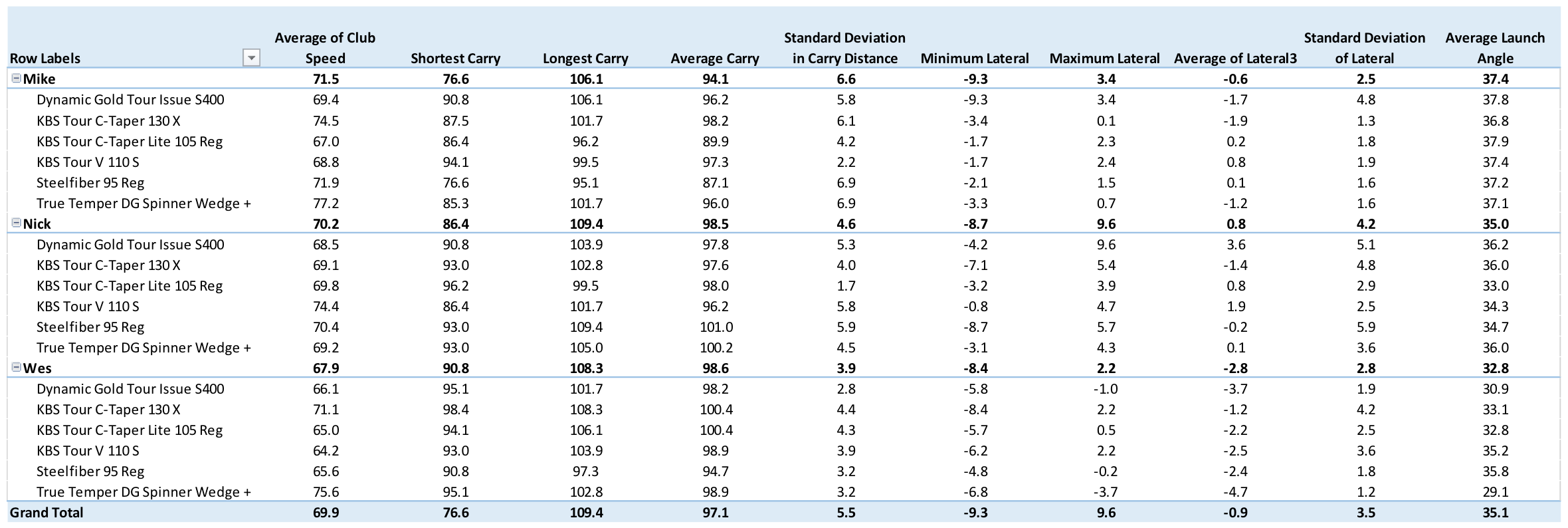
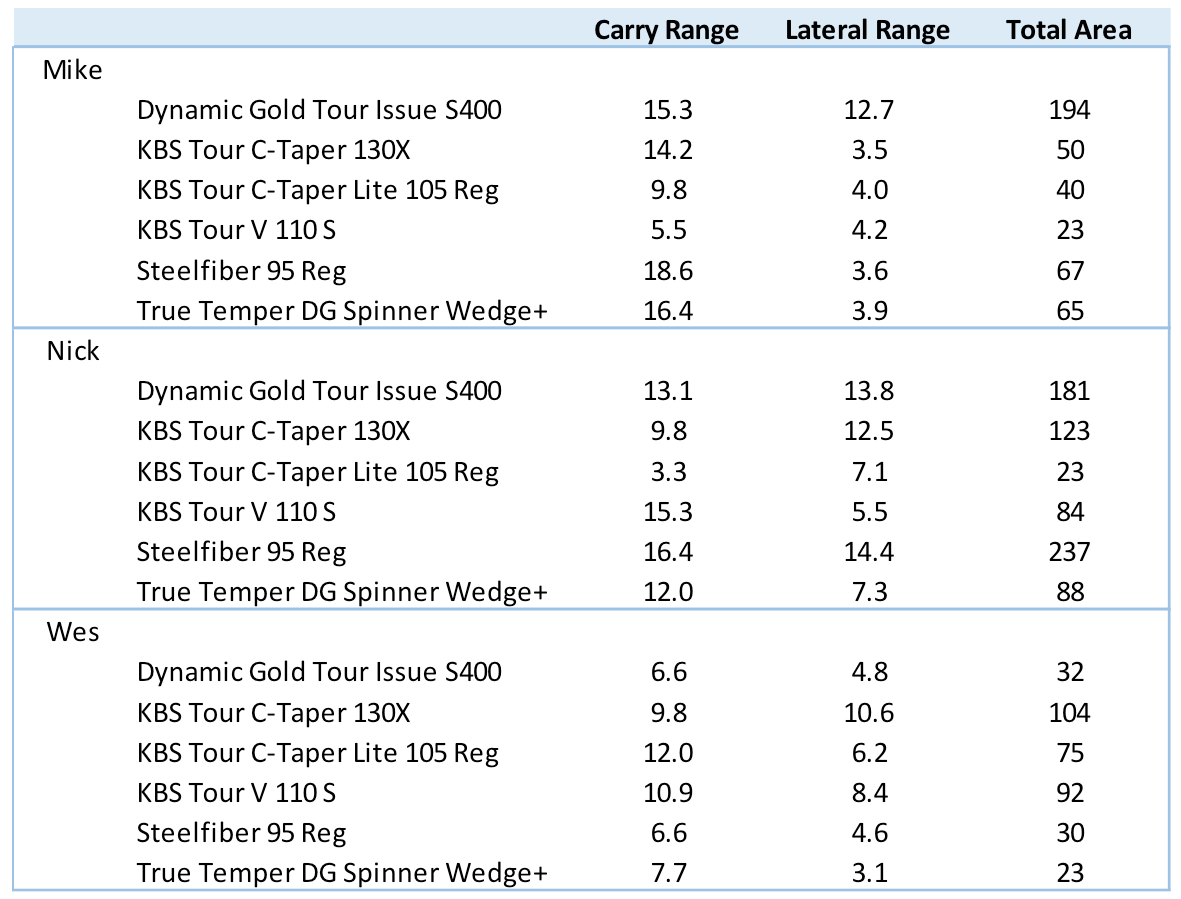
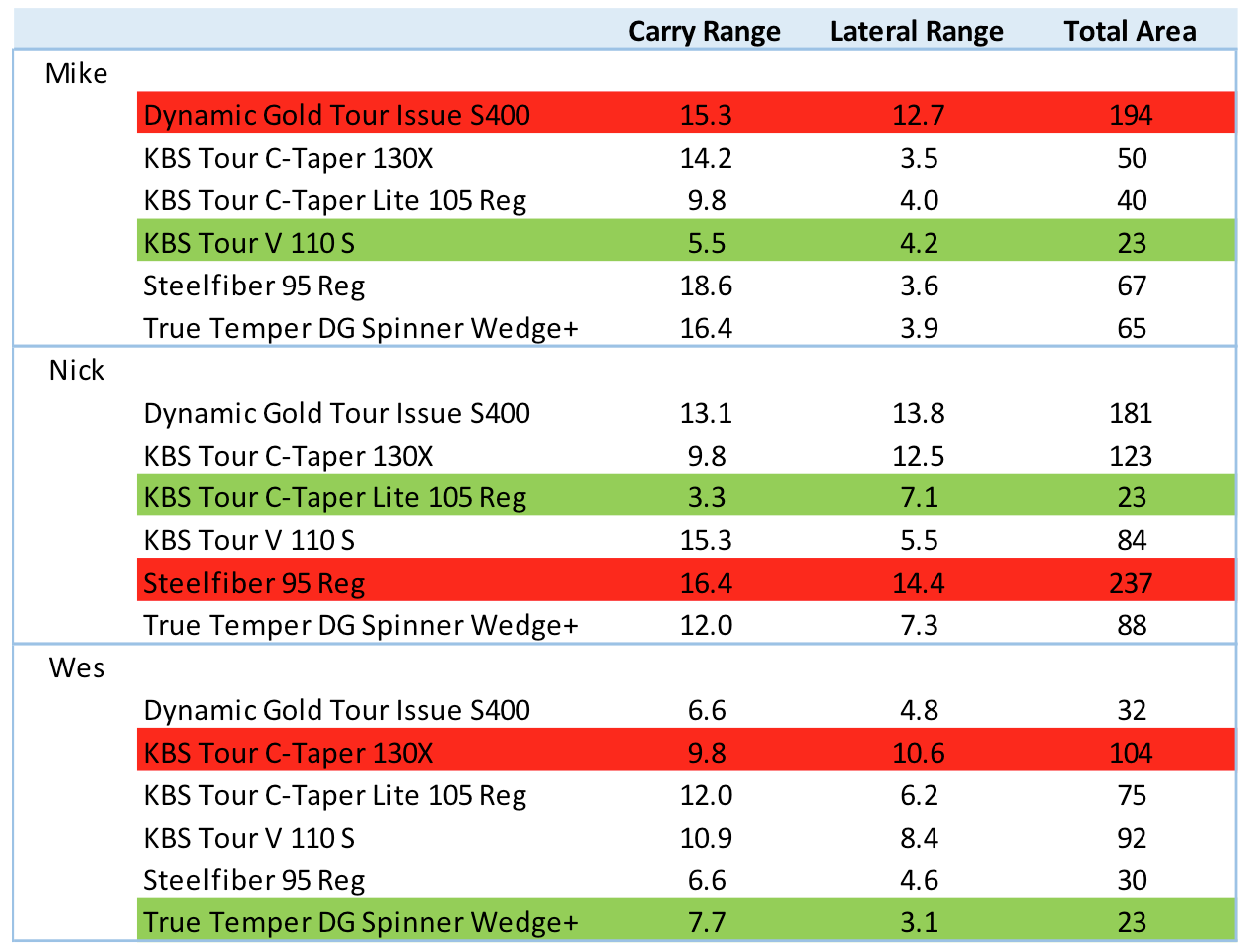






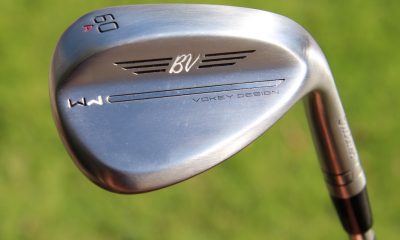

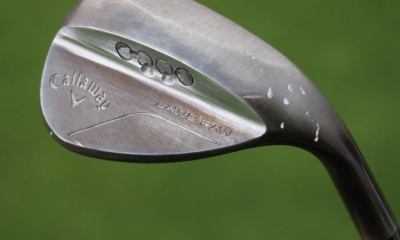





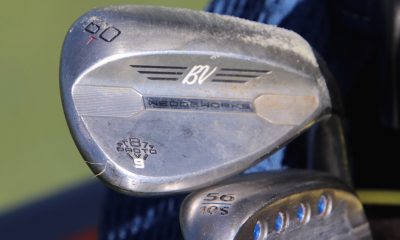













Steve Lack
Aug 28, 2016 at 11:25 am
Softer tips must be why some golfers tip trim their wedge shafts to 8 iron specs?
Ezra
Aug 21, 2016 at 4:35 pm
Absolute BS from a fitter trying to sell his services.
Steve S
Aug 31, 2016 at 1:53 pm
Agreed. Most of the articles I see on fitting are BS. Especially on drivers. Anyone schooled in physics and dynamics laughs at most of the articles. The reality is you want a shaft and grip that is as light and stiff as possible because any weight that is not in the club head does nothing to contribute to the force and momentum of the swing. By doing that then it’s a simple determination on loft of the club face and speed to determine maximum distance for you. This assumes that you have a reasonably decent swing arc and impact position. If not, you should work on that before worrying about “getting fit”.
John
May 27, 2020 at 3:46 pm
The dumbest comment ive ever read on any golf related subject, ever..
Clearly, You are an utterly clueless mental midget
Steve S
Aug 31, 2016 at 2:45 pm
Agreed. Most fitting advice is BS. All these guys try to make this complicated. Without a decent repeatable swing arc all “fitting” does is TRY to compensate for your mistakes which never works in the long run….
tlmck
Aug 19, 2016 at 3:06 pm
Same shafts as my irons and low bounce since the 1980’s has always worked well for me.
Benny
Aug 19, 2016 at 6:53 am
Great article even though I wasn’t able to understand all the data. I feel I am a better wedge player than most and know through trial and error what works well. S400 shafts my buddy had which he added weights too, were way to delayed so my shots went right while whippy wedge shafts or too light pull and hook. But how does the “bounce” play into this data? For instance I have always hit higher bounce heads much longer than low bounce. Regardless of the shaft. Should this be a factor when getting wedges fit and wouldn’t the bounce also cause different dispersion and accuracey?
baudi
Aug 18, 2016 at 9:25 am
Nice test and great article.
To me it simply proves that a good player should find his right wedge shaft.
Although I wouldn’t go as far stating lighter is better. (A softer shaft than in irons is definitely better. Tom Wishon did a great test on this one)
Point here is that a wedge being a utility club is used on partial shots most of the time. That implies a slower rhythm. A slightly heavier but softer shaft will create a lively feel in the swing.
Christian
Aug 17, 2016 at 10:39 pm
I have tried lighter shafts in wedges and initially they work well, especially during testing. After a while I start to get more misshits, a jerky/handsy action and even skulled shots. Back to S400s now, the most stable option for me. I game 130+ gram X in irons
Scott
Aug 24, 2016 at 9:34 am
I had the exact same results after moving to lighter shafts. Worked great until it didn’t. I get more feel with the heavier shaft.
Chris Wycoff
Aug 17, 2016 at 10:33 pm
Thanks for all the great comments and feedback – happy to answer any questions anyone might have!
jason c geraci
Aug 25, 2016 at 9:07 am
Why didn’t you test shafts that are specifically designed for wedges?
Chris Wycoff
Aug 17, 2016 at 10:30 pm
It’s not a specific wedge shaft, but we used in testing due to it’s flex profile. It it fits you, it’s a great shaft option.
Brian T
Aug 17, 2016 at 10:12 pm
Why not include the s200 as it is comes in pretty much every wedge out there? At least a baseline of sorts, or give us an idea of where it stacks up against the others.
Chris Wycoff
Aug 17, 2016 at 10:27 pm
Hi Brian –
That’s a good point, we used the S400 as it’s very close to the S200, only 3 grams heavier.
Matt
Aug 17, 2016 at 8:01 pm
I’m all messed up X100 in irons KBS Tour X in wedges.
Chris Wycoff
Aug 17, 2016 at 10:30 pm
Whatever works for you!
NS Pro
Aug 17, 2016 at 6:04 pm
Why were no Modus3 wedge shafts included in this fitting?
Chris Wycoff
Aug 17, 2016 at 10:07 pm
There was no reason it was intentionally excluded, we just had to pick a reasonable number of shafts with varying weights, flexes and profiles to show the variations. Love the Modus shafts, they very well may be the best shafts for you.
jf
Aug 17, 2016 at 5:53 pm
“Any findings will only be amplified for higher-handicap golfers due to increased swing variability, and any shaft-to-shaft variations might have been hidden by this inconsistency.”
So shaft fitting for wedges is of little benefit to most hackers?
Chris Wycoff
Aug 17, 2016 at 10:09 pm
Hi JF – thanks for reading, it actually means that wedge fittings are even more important for “most hackers’. Better players are better equipped to deal with a shaft that isn’t fit for their swing. Hackers need all the help they can get!
Larry
Aug 17, 2016 at 2:39 pm
I’m using reg flex KBS Tour 90 shafts in my irons. So the recommendation for my wedges is to soft step the same shafts to get lighter & more flexible. Correct?
Chris Wycoff
Aug 17, 2016 at 10:11 pm
Larry – the real recommendation is to find a fitter that allows you to test multiple options and find the best possible shaft. If that’s not possible, it’s very likely soft stepping your same shafts would produce better results than a stock wedge shaft.
DB
Aug 17, 2016 at 2:12 pm
What do you mean by this? You don’t like a lot of wedge or putter designs? Or they have the least tech?
“For most, wedges are in an unfortunate race with the putter to win the unceremonious award of the clubs that help golfers the least.”
explainer
Aug 17, 2016 at 3:17 pm
He means essentially “amateur/high-cap golfers just pick their wedges and putter willy nilly at a detriment to their score”
Chris Wycoff
Aug 17, 2016 at 10:47 pm
DB – unfortunately explainer is correct. Few golfers are fit for wedges and putters even though they are used for over half the shots in a round. The wedges and putter in most bags are working against the golfer, instead of for them.
T-Bone
Aug 17, 2016 at 1:56 pm
Chris, How does a shaft create more spin than another?
Chris Wycoff
Aug 17, 2016 at 10:12 pm
T-Bone –
Thanks for reading. Different shafts have different flex profiles that produce varying flight characteristics. For many, a soft tip section will produce a higher flight with higher spin.
T-Bone
Aug 18, 2016 at 12:16 am
OK, thanks. How many more RPM’s of spin could an average swing speed player expect when switching to a soft tip shaft?
Chris Wycoff
Aug 18, 2016 at 9:29 am
It’s really impossible to say. There are so many variables in the swing and how they interact with the shaft is what matters. It’s best to really find somewhere to try some options and find out for yourself.
Tyler Brown
Aug 17, 2016 at 1:10 pm
Why were wedge specific shafts like KBS 610 and Hi Rev not tested?
Chris Wycoff
Aug 17, 2016 at 10:32 pm
Hi Tyler –
If I were trying to make general recommendations on specific shafts, I definitely would have included them. The intent of this article was to simply illustrate how much variance there is between different shafts for different golfers. In an actual fitting, I do typically include those for testing.
GMR
Aug 17, 2016 at 1:09 pm
How often do these guys hit 100yd 56* wedge shots on the course? Personally I find that to be a relatively challenging scoring shot because the length of swing necessary and amount of spin generated (can get ball caught up in wind, spon back 15 feet on green, etc) and would normally opt to hit a 1/2 52* shot instead, which comes in lower and still stops dead. Would be curious to see these numbers again for testers hitting controlled half shots (e.g. 56* to 85-90) as I suspect the variation in swings and shaft performance may not be so substantial…
Chris Wycoff
Aug 17, 2016 at 10:17 pm
GMR –
Great question, these guys tend to hit that shot pretty frequently. We’ve found in fittings that the trend of using a lighter, softer shaft is actually amplified on half swing. The hypothesis is that these lighter, softer shafts still flex on easier swings and provide feel and feedback that is consistent with a full iron shot. For most, using an overly stiff shaft for these touch shots reduces feedback and consistency. Of course, there is not rule that applies for every golfer so it’s best to test for yourself if possible.
Uncle Buck
Aug 17, 2016 at 12:54 pm
Bravo!
Craig
Aug 17, 2016 at 12:18 pm
Great article, been looking for a good wedge shaft and this hits the bullseye. Thanks Chris.
Chris Wycoff
Aug 17, 2016 at 10:17 pm
Thank you!
Ryan
Aug 17, 2016 at 11:49 am
Is there a reason you tested the shafts with a full to 3/4 wedge shot?
Does the consistency with a specific shaft in your results continue with chips and pitches?
desmond
Aug 17, 2016 at 11:28 am
Typically, wedge shafts are slightly heavier but more flexible than your iron shafts… hmmm.
desmond
Aug 17, 2016 at 11:34 am
But maybe it says that faster speed players with heavy irons shafts do not need heavy wedge shafts. And that makes sense in terms of one is not typically going full bore with a high lofted wedge.
I can’t see a guy with 80g graphite shafts go to 75g graphite or steel in wedges. I see that guy (me) going from 85g graphite in R flex to 105g steel in R for greater precision, still keeping the shaft flex the same as irons. A golfer with stiff flex may want to go down slightly in flex.
Chris Wycoff
Aug 17, 2016 at 10:18 pm
Desmond – you may really want to try a lighter shaft in your wedges if possible. You might be pleasantly surprised.
desmond
Aug 18, 2016 at 4:21 am
Chris – I was fit for a KBS Hi Rev by an Edel fitter at 115g. My new Edel is fit with 110g Nippon Pro Modus Wedge 105. I think you’ll be surprised that if you get too light, you lose control, not to mention the balance of the club is affected. I am a strong wedge player. The lighter graphite iron shafts are for distance and less shock to body.
Chris Wycoff
Aug 18, 2016 at 9:25 am
Getting fit is the best answer – that’s why I was pretty careful to indicate these were trends, not solutions. Every player is different and what works for some definitely will not work for others. I’m glad you found the shafts that work the best for you!
AllBOdoesisgolf
Aug 17, 2016 at 11:06 am
great article but I wouldn’t say their swings are consistent… maybe, after seeing the results, that’s why you used the qualifier of “relatively”. When you have 6mph difference from top to bottom is speed there are going to be different results.
then again, we are not robots… it just surprised me that guys with low single digit handicaps can have such a large discrepancy of swing speeds.
Leon
Aug 17, 2016 at 11:05 am
Or another thumb of rule: use one less flex shafts (the same model) of your irons for your wedges. For example, if you have DG S300 for the irons, consider to put the DG S200 or soft step the S300 once or twice for the wedges. In this way, the clubs will have the same feel and swing characteristics, and there will no transition gap between the irons and wedges.
Lee
Aug 17, 2016 at 2:27 pm
Agreed, I know one of Europe’s top fitter and this is exactly what he and many others are doing.
Chris Wycoff
Aug 17, 2016 at 10:44 pm
While it’s best to try multiple shafts and get fully fit, if that’s not possible, your rule of thumb is likely much better than a stock “Wedge” shaft.
kyle
Aug 17, 2016 at 10:23 am
Agreed, terrific article. Thanks
J
Aug 17, 2016 at 10:05 am
Seriously great article, well done!
DaveMac
Aug 17, 2016 at 2:44 pm
A big thumbs up from me, nice to see a data driven equipment performance article for a change. Really interesting conclusions.